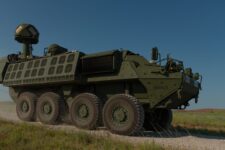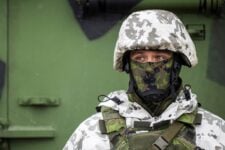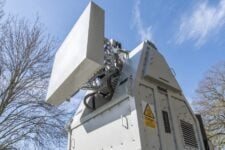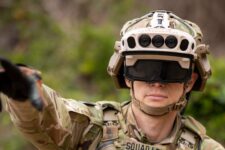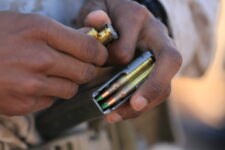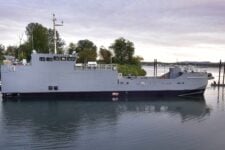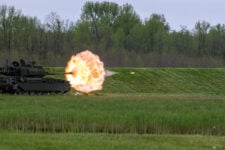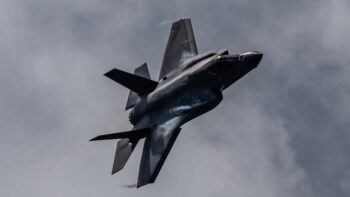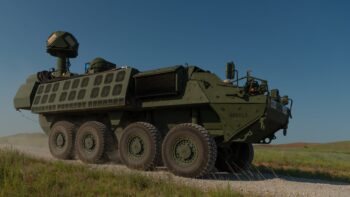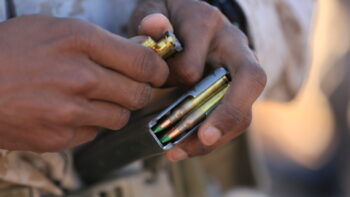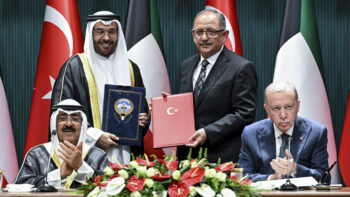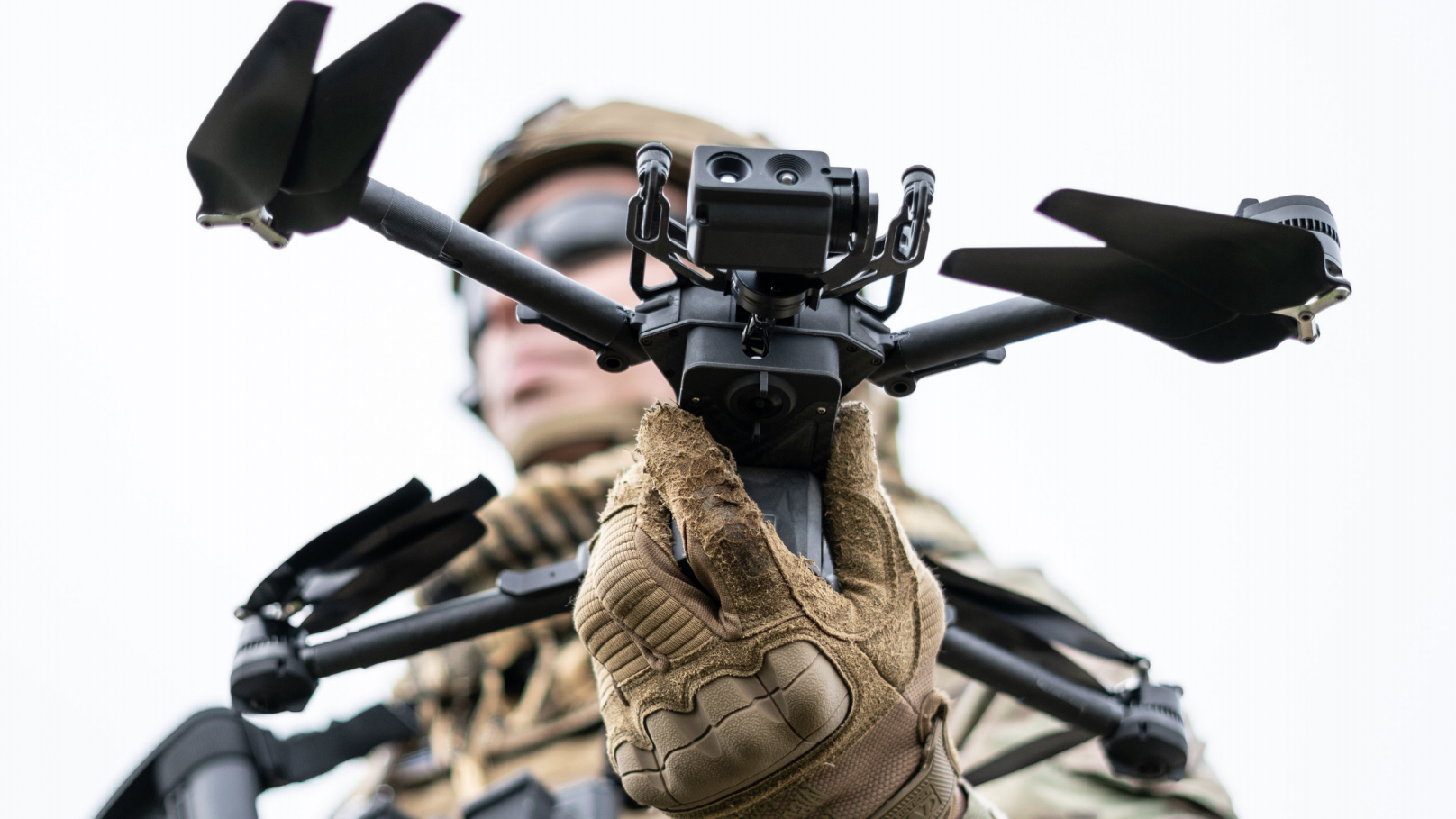
A soldier handles a commercially-developed drone acquired via the Defense Innovation Unit (DIU).
ORLANDO, Fla. — The Defense Innovation Unit is planning a technology summit early next year to increase industry engagement in the department’s Replicator initiative, as the government eyes a first “tranche” of systems that will be ready to field between February and August of 2025.
Ahead of that summit, the Pentagon’s tech office is working to understand what gaps exist that Replicator can fill, DIU Director Doug Beck told reporters today.
“This effort builds on all that we have learned through the innovation efforts of all various types that we’ve had across the department,” Beck said. “And we’re also learning from … what we’re seeing happening in Ukraine and elsewhere around the world right now and leveraging all of that to meet the strategic needs in INDOPACOM.”
DIU is currently in the process of looking across its portfolio and identifying capabilities that can fit the criteria for Replicator, which aims to field thousands of attritable autonomous systems across multiple domains within two years. Deputy Defense Secretary Kathleen Hicks announced Nov. 21 that DoD will decide by mid-December which systems will be first to be mass produced under the effort, but candidates won’t be announced.
In the first “month or two” of Replicator, DIU has been working to identify a “selection criteria” for systems that would be a good fit for that first tranche of Replicator and getting an agreement across DoD to use those as “guideposts” for the effort, said Aditi Kumar, deputy director for strategy, policy and national security partnerships.
“And this is where we’re looking at … leveraging our solicitation process to bring in new entrants and you will see that process play out here in the next few months as we go out to industry and to try to plug those gaps … in an effort to deliver an entire…portfolio,” Kumar said.
Although the effort is broken down into tranches, the criteria for the systems will not change across the board, Kumar said. The first tranche will come from both large and small companies that DIU works with frequently, Beck said, and include systems that are ready to be scaled and have been tested and validated in appropriate environments.
“And then I think a key piece also of this tranching or batching concept is obviously the new entrants that we want to bring in and so as we look at the current portfolio and identify where there are gaps, then in successive tranches we can try to fill those gaps by bringing in the new entrants,” she said.
As part of increasing industry engagement for Replicator, DIU is planning to host a technology summit early next year to identify critical capabilities and “build some of the common architecture pieces and other enabling pieces to deliver a capability that over the long term the department can benefit from,” she added.
Kumar said that while DIU will not be revealing the specific systems or companies that will be chosen for Replicator, she added that there may be systems “that are already on order” that DIU is purchasing that may be part of Replicator moving forward that need further analysis and testing. (In her initial announcement of the effort, Hicks stated that the DoD plans to be cagey with details of the effort.)
She added that the innovation hub has, however, been “very transparent” with Congress on the effort. Lawmakers have previously raised concerns about the ambitious drone initiative, specifically with how it will be funded and implemented.
Army Seeking Small Drones For Replicator Effort
There are some hints of how the services are approaching Replicator.
Earlier this month, the Army’s Program Executive Office for Aviation released a “sources sought” notice for “low-cost, non-development or commercial uncrewed aircraft systems to support unit training and operations.” The service stated it was looking for industry vendors that could “successfully fulfill a Replicator initiative” or other future competitions.
Specifically, the solicitation is seeking out systems that cost less than $3,000, have day and night visual capabilities and can fly for 30 minutes with a range of 1 kilometer, according to the solicitation. That doesn’t, on paper, quite line up with how Hicks positioned Replicator as a counter-China effort, said Caitlin Lee, director of the Acquisition and Technology Policy Program at RAND.
However, Lee noted that since the RFI was coming from the Army’s aviation hub, “there is an intent to use it for close-in fighting, to see ‘over the hill,’ as the Army used drones in Iraq and Afghanistan.”
“This might be helpful in an ‘island hopping’ -type campaign, and the smaller scale might make these drones easier to produce — both in the US and in ally and partner countries,” Lee said in a statement to Breaking Defense. “But it’s not clear that ground fighting inside the range of Chinese missiles is really going to be a viable option for US forces, so I do find the very limited range and endurance on these proposed drones to be concerning … The use cases I see in the Indo-Pacific are for halting an invasion force, which requires drones that can contribute to maritime targeting solutions.”
Lee added that the drones “most definitely should not be ‘exquisite’ — and I do worry that some parts of DoD are headed in the ‘exquisite direction’— but they do need to be military-class in the sense that they have anti-jamming capabilities, the ability to operate over water, and sufficient range and endurance to fulfill key missions involved in halting a Chinese invasion force, including maritime ISR and also kinetic kill missions of airborne and surface assets.”
The Army’s solicitation follows DIU’s own “solution brief” that was released in October for affordable, mass-produced open architecture, medium-range “unmanned aerial delivery vehicles.”
Meanwhile, a new strategy from DIU is expected to be released in a few weeks, Beck said. The document will further lay out how “DIU 3.0” will operate after it was elevated to report up to the secretary of defense.
“What DIU 3.0 is all about is taking that capability and applying it for strategic effect which means focusing in on those most critical capability gaps that we must solve for in order to deter major conflict…and then working as a department to ensure that we’re able to scale that capability to the point that it can have that strategic effect and do all of that with the speed that is relevant to the needs that we have,” Beck said.
